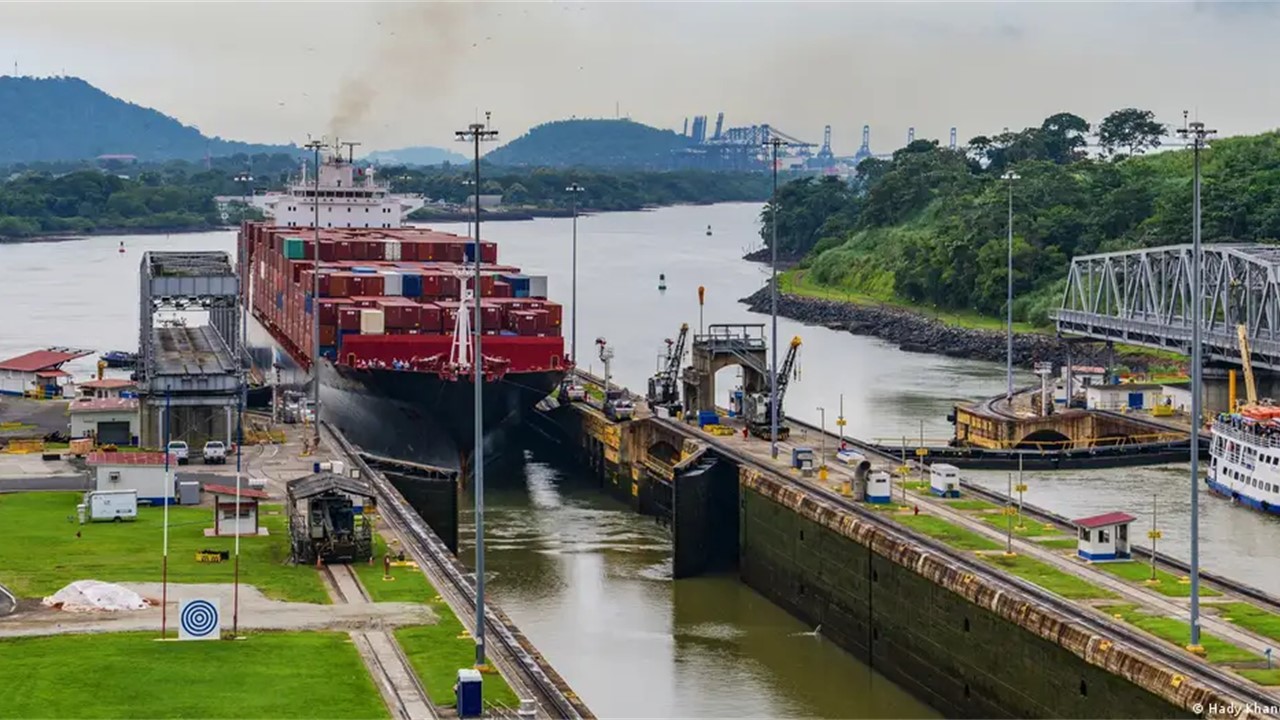The Panama Canal Prepares for La Niña and Massive Rainfall

Panama is preparing to deal with the possible flooding that will be generated by the arrival of the La Niña phenomenon in the country, following the impact of the drought and the El Niño phenomenon that affected the transit of ships through the Panama Canal, a waterway through which more than 6% of world trade passes. “According to the forecasts, there will be a lot of rain in the next three months, so we must be prepared. I asked all the ministers, the National Civil Protection System (Sinaproc) and the Office of the First Lady to prepare for a potential increase in victims due to this issue,” said the President of the Republic of Panama, José Raúl Mulino, at a press conference. Mulino acknowledged that, although the country cannot do anything to prevent the rains, there are no excuses for not being prepared. “We are trying to ensure that our response capacity is in line with the forecasts given by meteorologists,” he stressed.
Data from the Institute of Meteorology and Hydrology of Panama (IMHPA) confirm that in August, the country expects rainfall values to be “above normal” in Chiriquí (Lowlands), Ngäbe Buglé Region, Central and Southern Veraguas, Herrera, Los Santos, Southern Coclé, Eastern Panama, Guna Yala Region and Darién. Normal behavior with a downward trend is expected in Northern Veraguas, Western Panama, Central Panama, Northern Coclé and the Lower Coast of Colón. Seasonal behavior is expected for the rest of the country. In September, rainfall is expected to be “normal, typical of the season” in much of the country. “However, it is not ruled out that rainfall levels in the western region of the country will behave normally with a downward trend. While in the central region of the country (West Panama, Panama and Colon) there will be normal behavior with an above-normal trend,” he said. Data from the Food and Agriculture Organization of the United Nations (FAO) indicate that agriculture and its subsectors absorb 23% of the economic losses caused by these types of events. “In our region, this represents an average loss of 975 calories per capita per day, which translates into a direct consequence on the food security of the population,” the organization alleged in a statement.
The Latin American and Caribbean (LAC) region accounts for 53% of global economic losses from natural disasters, said Nahuel Arenas, head of the Regional Office for the Americas and the Caribbean of the United Nations for Disaster Risk Reduction (UNDRR). “Between 1997 and 2017, six of the ten countries with the greatest economic losses, relative to gross domestic product (GDP), due to natural disasters were in LAC,” he said during a forum held by the Economic Commission for Latin America and the Caribbean (ECLAC). The vulnerability of the region is evidenced by the fact that in 2017, Hurricane Maria caused damage and losses to Dominica’s GDP, amounting to 226%. “LAC is the region with the second greatest losses in educational infrastructure and the third in the health sector, and these losses occur in an area with limited fiscal space, which makes it impossible for them to invest in climate adaptation and resilience,” Arenas said. At this time, Central America has begun a transition process between the El Niño and La Niña phenomena. “The El Niño phenomenon has already come to an end and we are in a clear transition process where the Western Pacific has very slight warm anomaly components (between 0.5 °C), while the Central Pacific and the Eastern Equatorial Pacific are already beginning to see signs of cooling,” said Rodney Martínez, representative of the World Meteorological Organization (WMO) for North America, Central America and the Caribbean.
Martínez’s words were given during the Webinar: The La Niña Phenomenon in Central America, held on July 4 by the European Union. The WMO has indicated that the conditions for the region to be experiencing the La Niña phenomenon have not yet been met, with a 50% probability of this phenomenon hitting the region between July and August. This probability increases to 60% between August and September and to 70% in November. Maximiliano Campos, Executive Secretary of the Regional Committee for Water Resources, said during the meeting that the La Niña phenomenon has always been particularly harsh on Central America and this time will be no exception. “What is coming is particularly serious and we have to prepare ourselves,” he said, referring to the increase in hurricanes and storms in the area, such as Alberto, Beryl and Chris. “The rainy season will be more intense than normal in the Pacific in the northern part of Central America, as we see in Costa Rica and Panama,” he said.
In the midst of this reality, Álvaro de Vicente, from the Directorate General for Civil Protection and European Humanitarian Aid Operations (ECHO), mentioned that, if one analyses the humanitarian funding that Echo has given to the region, one can determine that this has been greater in the years in which the La Niña Phenomenon has been present, due to the increase in hurricanes and storms that it causes. In 1998, Echo spent 16,000,000 euros ($17,422,643) on humanitarian aid to deal with hurricanes and storms, being the year in which it used the most money. In recent times, for 2020, about 11,000,000 euros ($11,978,067) were used for this while, in 2023, the figure was close to 2,000,000 euros ($2,177,830). De Vicente stressed that, for 2024, it is important that the countries in the region are coordinated in the development of meteorological information. “This will allow countries to have good response standards that allow comprehensive care for those potentially affected,” he exclaimed. Claudia Herrera, from the Copernicus LAC Centre in Panama, said that in the region, the temperature of the oceans and atmosphere, plus the deterioration of mangroves and reefs make us vulnerable to the impact of climatic phenomena.





